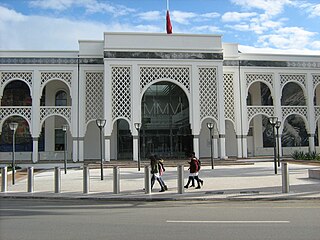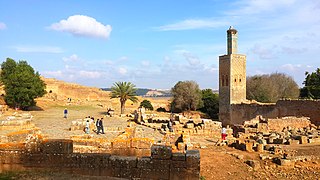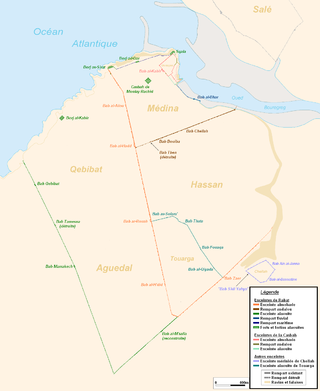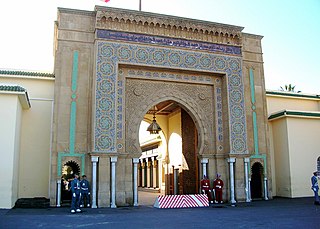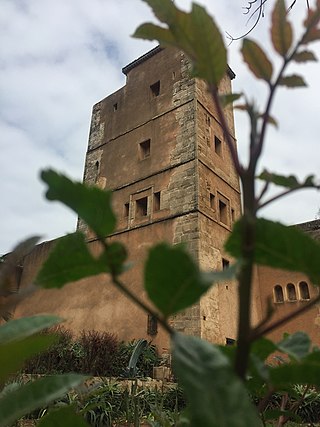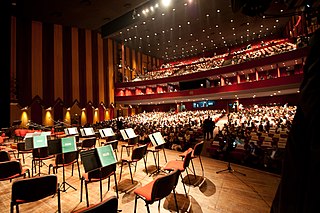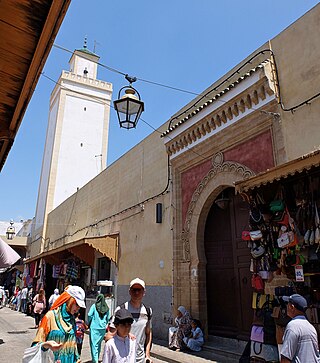9 Sights in Rabat, Morocco (with Map and Images)
Legend
Premium Sights
Book tickets, guided tours and activities in Rabat.
Guided Free Walking Tours
Book free guided walking tours in Rabat.
Welcome to your journey through the most beautiful sights in Rabat, Morocco! Whether you want to discover the city's historical treasures or experience its modern highlights, you'll find everything your heart desires here. Be inspired by our selection and plan your unforgettable adventure in Rabat. Dive into the diversity of this fascinating city and discover everything it has to offer.
Activities in Rabat1. Mohammed VI Museum of Modern and Contemporary Art
The Mohammed VI Museum of Modern and Contemporary Art, abbreviated MMVI, is a contemporary and modern art museum in Rabat, Morocco which opened in 2014. It is one of fourteen museums of the National Foundation of Museums of Morocco. The museum curates modern and contemporary Moroccan and international art. The MMVI is the first large scale museum built in Morocco since independence from France in 1956. It was the first Moroccan public museum to meet International Museography Standards. The museum houses the works of 200 Moroccan artists, including Hassan Hajjaj and Ahmed Yacoubi.
Wikipedia: Mohammed VI Museum of Modern and Contemporary Art (EN), Website
2. Nécropole du Chellah
The Chellah or Shalla, is a medieval fortified Muslim necropolis and ancient archeological site in Rabat, Morocco, located on the south (left) side of the Bou Regreg estuary. The earliest evidence of the site's occupation suggests that the Phoenicians established a trading emporium here in the first millennium BC. This was later the site of Sala Colonia, an ancient Roman colony in the province of Mauretania Tingitana, before it was abandoned in Late Antiquity. In the late 13th century the site began to be used as a dynastic necropolis for the Marinid dynasty. By the mid-14th century Marinid sultans had enclosed a part of the site with a new set of walls and built a religious complex inside it to accompany their mausoleums. In the 15th century the necropolis began to decline and it suffered damage over the centuries due to earthquakes and looting. Archeological excavations in the 20th century unearthed the remains of the ancient Roman town. Today the site is a tourist attraction and since 2012 it forms part of a UNESCO World Heritage Site.
3. Bab Zaer باب زعير
The walls and fortifications of Rabat, the capital of Morocco, are an ample part of its historical heritage. The city has been bounded throughout its history by three main walls, built successively at the end of the twelfth century, the beginning of the seventeenth century and the beginning of the nineteenth century, respectively under the Almohad dynasty, by the Moriscos and under the Alawite dynasty.
4. Cathédrale Saint-Pierre
St. Peter's Cathedral is a Roman Catholic church located at Golan Square in downtown Rabat, Morocco. It was erected in the early 20th century in the Art Deco style. The cathedral is dedicated to Saint Peter, and is the ecclesiastical seat of the Archdiocese of Rabat.
5. Palais Royal Rabat
The Royal Palace or Dar al-Makhzen is the primary and official residence of the king of Morocco in Rabat. It is situated in the commune of Touarga. Its official name is El Mechouar Essaid, lit. 'Venue of Happiness'.
6. Rabat Zoo
Rabat Zoo, also known as "Temara Zoo", is a zoological park near Rabat in Morocco that was established in 1973. The first enclosures were built to house lions that were previously kept in the royal palace. These lions were thought to be descendants from Barbary lions.
7. Musée des Oudayas متحف الأوداية
The National Jewellery Museum, in French Musée national de la Parure, of Morocco is an ethnographic museum, located in the former Musée des Oudayas in the country's capital Rabat. Along with the Kasbah of the Udayas, the museum's buildings and Andalusian-inspired gardens are part of UNESCO's World Heritage sites in Rabat. Opened to the public in January 2023, the museum attracted 40,000 visitors during the first week.
8. Theatre Mohammed V
The Mohammed V National Theatre or Mohammed V Theatre is a theatre in Morocco and the first theatre building established since its independence. Founded in 1973, it is located in the center of Rabat, the capital of Morocco, near the old medina and Avenue Mohammed V.
9. Mosquée Moulay Slimane
The Moulay Slimane Mosque is a mosque in the medina of Rabat, Morocco. It was built in 1812 by the 'Alawi sultan Moulay Slimane, after whom it is named. It is the second-largest mosque of the medina north of the Andalusian wall, located at the intersection of Souika Street and Sidi Fateh Street, close to the Bab Bouiba gate. The mosque occupies a surface area of 1000 square metres and its minaret is 32 meters high. It has a traditional layout for a Moroccan mosque, with a courtyard (sahn) and an interior hypostyle prayer hall.
Share
Disclaimer Please be aware of your surroundings and do not enter private property. We are not liable for any damages that occur during the tours.
